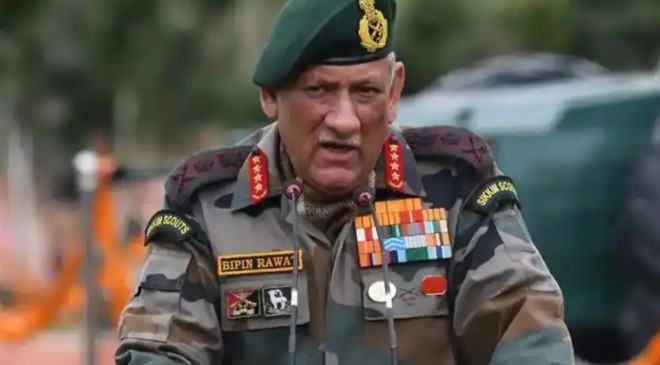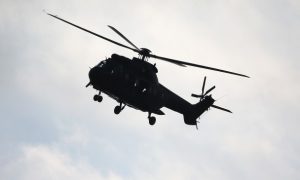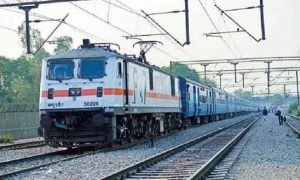According to reports, CDS Rawat was headed to Defence Services Staff College located in Wellington in Udhagamandalam (Ooty). His wife Madhulika Rawat was also on the chopper that crashed.
After a military chopper crash between Coimbatore and Sulur on Wednesday, General Bipin Rawat was left critically injured and later succumbed to his injuries. The Indian Air Force took to Twitter and informed of his demise in the evening, saying “With deep regret, it has now been ascertained that Gen Bipin Rawat, Mrs. Madhulika Rawat and 11 other persons on board have died in the unfortunate accident”.
Read More:-Gen Bipin Rawat chopper crash: Mi17V5 is advanced transport helicopter with IAF since 2012
All 14 personnel on board, including General Rawat and his wife, lost their lives in the deadly crash. Rawat was a four-star General of the Indian Army. Rawat’s demise is a crucial loss to the Indian Army, as he was a prominent face of the Defense Staff.
According to reports, CDS Rawat was headed to Defence Services Staff College located in Wellington in Udhagamandalam (Ooty). Rawat was a four-star general of the Indian Army and the first Chief of Defence Staff (CDS) of India. Here’s all you need to know about him:
Early life and education
Born on March 16, 1958, Late General Rawat was born in Pauri, Uttarakhand in a Hindu Garhwali Rajput family. The family had been serving in the Indian Army for multiple generations. His father Laxman Singh Rawat was from Sainj village of the Pauri Garhwal district and rose to the rank of Lieutenant-General. His mother was from the Uttarkashi district and was the daughter of Kishan Singh Parmar, the ex-Member of the Legislative Assembly (MLA) from Uttarkashi.
Rawat attended Cambrian Hall School in Dehradun and the St. Edward’s School, Shimla. He then joined the National Defence Academy, Khadakwasla and the Indian Military Academy, Dehradun, where he was awarded the ‘Sword of Honour’.
Rawat is also a graduate of the Defence Services Staff College (DSSC), Wellington and the Higher Command Course at the United States Army Command and General Staff College at Fort Leavenworth, Kansas.
Rawat’s contribution to the Indian Army
General Rawat was commissioned into the 5th battalion of 11 Gorkha Rifles on 16 December 1978, the same unit as his father. He has much experience in high-altitude warfare and spent ten years conducting counter-insurgency operations.
He commanded a company in Uri, Jammu and Kashmir as a Major. As a Colonel, he commanded his battalion, the 5th battalion 11 Gorkha Rifles, in the Eastern sector along the Line of Actual Control at Kibithu.
He also held staff assignments which included an instructional tenure at the Indian Military Academy (Dehradun), General Staff Officer Grade 2 at the Military Operations Directorate, logistics staff officer of a Re-organised Army Plains Infantry Division (RAPID) in central India, Colonel Military Secretary and Deputy Military Secretary in the Military Secretary’s Branch and Senior Instructor in the Junior Command Wing. He also served as the Major General Staff (MGGS) of the Eastern Command.
First Chief of Defense Staff (CDS) of India
Prior to taking over as the CDS, he served as 57th and last Chairman of the Chiefs of Staff Committee as well as 26th Chief of Army Staff of the Indian Army. On 17 December 2016, the Government of India appointed him as the 27th Chief of the Army Staff, superseding two more senior Lieutenant Generals, Praveen Bakshi and P. M. Hariz. He took office of Chief of Army Staff as the 27th COAS on 31 December 2016, after retirement of General Dalbir Singh Suhag.
1987 Sino-Indian skirmish
During the 1987 face-off in the Sumdorong Chu valley, Rawat’s battalion was deployed against the Chinese People’s Liberation Army. The standoff was the first military confrontation along the disputed McMahon Line after the 1962 war.
2015 Myanmar strikes
In June 2015, eighteen Indian soldiers were killed in an ambush by militants belonging to the United Liberation Front of Western South East Asia (UNLFW) in Manipur. The Indian Army responded with cross-border strikes in which units of the 21st battalion of the Parachute Regiment struck an NSCN-K base in Myanmar. 21 Para was under the operational control of the Dimapur-based III Corps, which was then commanded by Rawat.



































